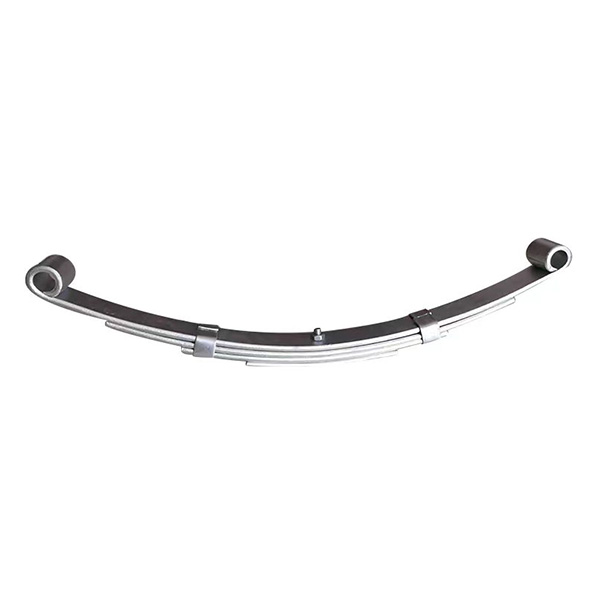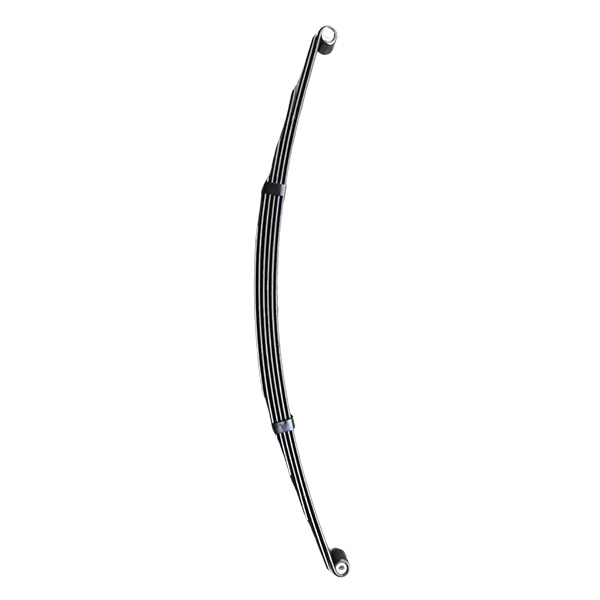
The Shift Toward Sustainable Suspension Systems
As global industries move toward greener manufacturing and transportation, the automotive sector is adopting more eco-friendly solutions — and suspension systems are no exception. Among them,taper leaf springs stand out for their ability to combine high performance with sustainability. Unlike conventional multi-leaf springs, taper leaf springs use a parabolic design with fewer and lighter leaves, reducing material consumption and improving vehicle efficiency.


The new generation ofeco-friendly taper leaf springs takes this innovation further by incorporating sustainable materials and advanced production processes. These improvements aim to minimize environmental impact while maintaining the strength, flexibility, and durability essential for modern vehicles.
Sustainable Materials in Taper Leaf Spring Manufacturing
Traditionally, leaf springs have been made from carbon or alloy steel. While strong, these materials have high energy requirements during production. The latest eco-friendly variants use alternative materials designed to reduce weight, energy use, and carbon emissions:
1. High-Strength Lightweight Steels:
Modern alloys with microalloying elements (like vanadium or niobium) reduce material thickness without sacrificing load capacity. This cuts overall steel consumption and enhances recyclability.
2. Composite and Fiber-Reinforced Plastics (FRP):
Composite taper leaf springs made from glass fiber or carbon fiber reinforced polymers offer exceptional strength-to-weight ratios. They resist corrosion, last longer, and lower fuel consumption due to reduced vehicle mass.
3. Recycled Metal and Hybrid Materials:
Some manufacturers are experimenting with recycled steel and hybrid composites that blend metal and fiber layers. These sustainable solutions reduce waste and extend the life cycle of suspension components.
By integrating these advanced materials, manufacturers achieve both environmental responsibility and high mechanical performance — a balance crucial to modern automotive design.
Manufacturing Innovations Reducing Environmental Impact
Beyond materials, theproduction process plays a key role in sustainability. New manufacturing technologies for taper leaf springs help minimize waste, reduce emissions, and improve efficiency:
· Energy-Efficient Heat Treatment: Controlled induction and tempering systems optimize heating cycles, reducing energy use by up to 30%.
· Automated Forming and Peening: Robotic precision reduces defects and scrap rates, ensuring longer spring life and consistent quality.
· Closed-Loop Recycling Systems: Factories are increasingly adopting closed-loop metal recycling, reusing byproducts from forging and machining.
These eco-friendly processes align with international standards for green manufacturing, helping OEMs meet environmental regulations and reduce lifecycle carbon footprints.
Performance Benefits of Eco-Friendly Taper Leaf Springs
Sustainability does not mean compromising on performance. Eco-friendly taper leaf springs offer multiple advantages that enhance vehicle handling, safety, and cost efficiency:
1. Lightweight Design for Better Fuel Efficiency: Lower unsprung mass improves fuel economy and reduces emissions.
2. Extended Durability: Corrosion-resistant and fatigue-optimized materials extend service life, reducing replacement frequency.
3. Improved Comfort and Handling: The parabolic shape ensures even load distribution and smoother ride quality.
4. Lower Maintenance Requirements: Reduced friction between leaves and anti-corrosive materials minimize maintenance costs.
These benefits make eco-friendly taper leaf springs a smart investment for both manufacturers and fleet operators seeking to balance performance with environmental stewardship.
Future Trends in Sustainable Suspension Technology
The future of leaf spring technology lies inintegration and innovation. Research and development efforts are focused on:
· Full Composite Spring Systems: Entire suspension units made from composite materials for ultra-lightweight vehicles.
· Smart Materials and Sensors: Embedded sensors monitoring stress, load, and wear to optimize maintenance cycles.
· Recyclable and Biodegradable Composites: Next-generation materials designed for easy recycling at end of life.
· Integration with Electric Vehicle (EV) Platforms: Lightweight, energy-efficient suspension systems to enhance EV range and performance.
As sustainability becomes a global standard, eco-friendly taper leaf springs will continue to evolve, supporting the automotive industry’s transition toward a cleaner and more efficient future.
Conclusion: Building a Greener Suspension Future
Eco-friendly taper leaf springs represent a perfect synergy between performance and sustainability. Through innovative materials, cleaner manufacturing, and smarter designs, they are shaping the next generation of suspension systems. For vehicle manufacturers aiming to meet both performance and environmental goals, these springs provide a practical, forward-looking solution that aligns with the growing demand for sustainable mobility.
Meta Description:
Explore eco-friendly taper leaf springs made from sustainable materials. Learn how green manufacturing and composite innovations are shaping the future of vehicle suspension systems for better performance and lower emissions.





